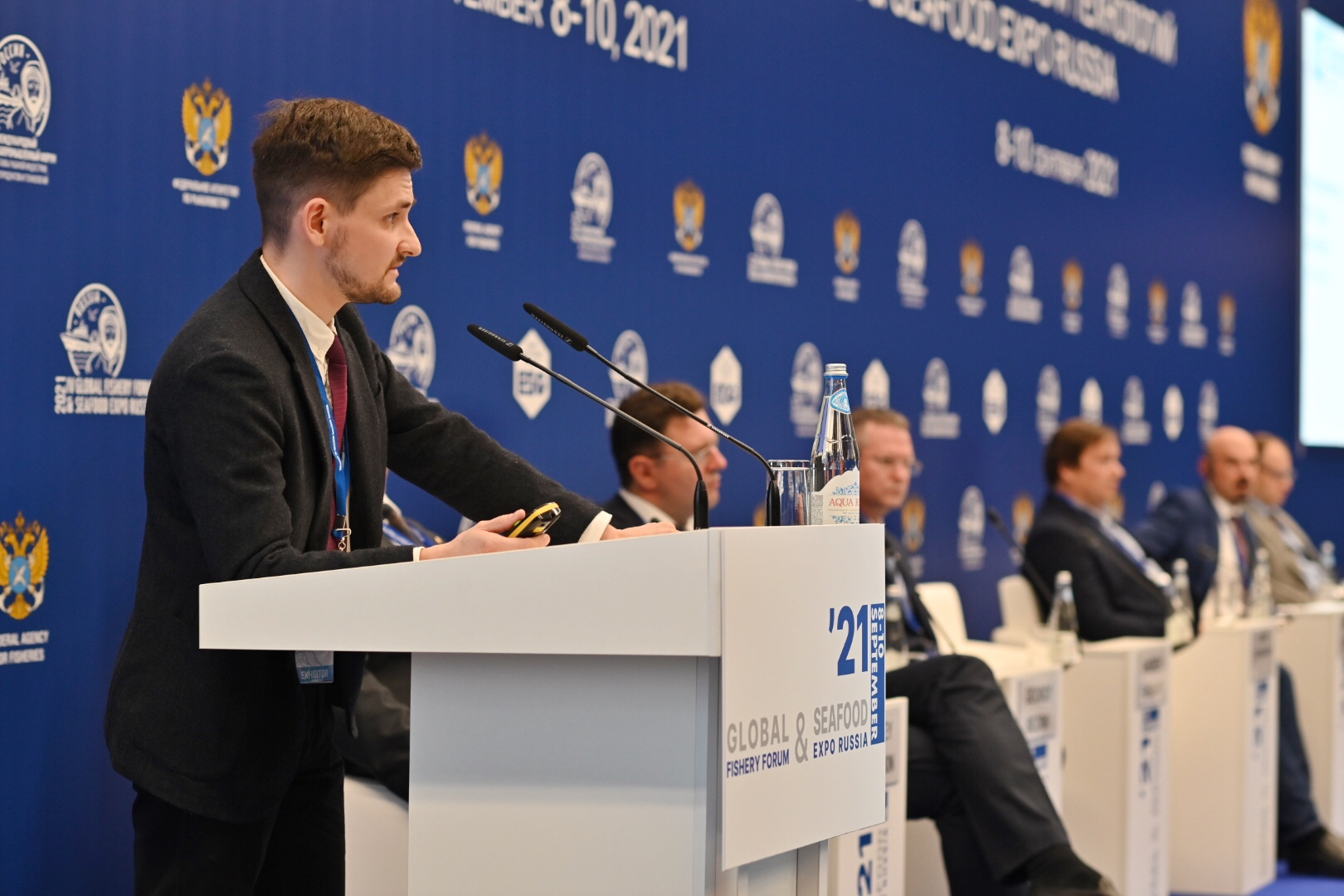September, 17-19, 2024, Saint Petersburg

The state of the Russian shipbuilding industry, its pressing problems and development prospects were discussed at the conference “Design and Construction of RS-classed Fishing Fleet. Open Dialogue with the Industry” held by the Russian Maritime Register of Shipping on the first day of the Global Fishery Forum.
Georgy Bedrik, Head of the Planning and Marketing Division of the Russian Maritime Register of Shipping (RS), outlined the role and key functions of the organisation today. He said all changes in the industry affect shipbuilding in one way or another, so RS reacts promptly to requests to ensure quality construction of various types of ship.
There are currently 232 vessels under construction at domestic and foreign shipyards. This is a record: for the first time, the gap between Russia and the leading shipbuilding countries has been minimised, said Georgy Bedrik. “And it is fishing vessels that account for the biggest share of the vessels under construction, currently 79 units. That is why we pay great attention to communication with our fishermen customers”, he stressed. “We are ready for further growth in orders from the fishing industry.”
The institution is now actively digitising its operations, which not only allows it to optimise processes, but also to monitor remotely the work of specialists at shipyards in different parts of the world. A relatively new but already popular service offered by the Maritime Register is expert assessment of the state of a vessel’s construction, which the agency provides at the request not only of customers but also of lending banks.
Andrey Fasolko, Head of the RS Classification Division, reported on the Maritime Register’s efforts to have the Russian Maritime Register rules amended and on new international requirements. He said work was ongoing to improve the RS regulatory framework, adding that the doubling of the number of fishing vessels under construction over 2019 had served as a catalyst to raising the professional level of the classification society's specialists. Currently, fishing vessels are being built to 16 designs in 21 shipyards, 17 of the ships being Russian and four foreign.
The basis for amending the RS rules is entry into force of the requirements of IACS, IMO and other organisations concerning the activities of the classification society, research work and recommendations of the Scientific and Technical Council, direct requests from customers and shipbuilding organisations, as well as analysis of deviations from the RS requirements and rules, including proposals for sound new design solutions.
The changes introduced in the last two years have concerned stability rules, clarification of requirements on structures under high stress, expansion of the range of materials used, fire protection requirements on premises with refrigeration equipment and explosive materials, location of emergency power supply systems, and in relation to the capacity of the main source of electrical energy. New symbols have been introduced for vessel classification and a two-year effort has been completed to amend the RS guidelines for ice-class vessels. It is important that all new fishing vessels under construction are vessels of ice 2 and ice 1 classes, or a combined class, the specialist said.
Among other things, the international requirements of the Tier 3 standard that apply to vessels operating in the Baltic and North Sea have been clarified and specified, and the MSC has elaborated proposals for safety of fishing vessels over 24 metres long, though these are still advisory in nature.
Important improvements have been made to the Maritime Register website: the navigation and document search has been significantly optimised, making it easier to find information in Russian and English on the requirements on each class of vessel.
Kazimir Dobrzhinsky, Senior Expert at the RS Design Technical Appraisal Department, continued on the topic of optimising online collaboration with customers and improving the project review procedure. He said the newly implemented module allowed customers to track online the status of applications and other information submitted to the registry, simplifying remote submission of ship design drawings and other documentation. He detailed the changes in international requirements on ships entering European Union waters.
In addition, Nikolay Avtutov, Director for Prospective Development and Chief Engineer at the Maritime Engineering Bureau, said that two new crab KSPO2 project vessels built in Turkey to Russian designs – the Arktur and the Azimut – had been launched this year. In a few months’ time, they will be joined by a third similar vessel, the Neptune. These vessels are on a par with other production vessels in their class in terms of technical characteristics and production capacity, and in some respects surpass all current specialised vessels, as was demonstrated during the presentation, accompanied by a detailed description of the vessels. This experience was explained in more detail by Sakir Erdogan, a representative of Tersan, the Turkish builder and shipyard itself.
The participants also discussed the experience of foreign designers in Russia, cooperation between complex suppliers and the classification community, and new developments in RS software for ship hull design support.
The partners include Rosselkhozbank (General Partner), Sberbank (Partner Bank), Norebo Holding (Business Partner), Sigma Marine Technology (Official Partner), Antey (Registration Zone Partner), FEST Group (Strategic Partner), Okeanrybflot (Business Programme Partner), United Shipbuilding Corporation (Partner) and Dobroflot Group (Partner).
Source: Press Office of the Global Fishery Forum & Seafood Expo Russia 2021.



